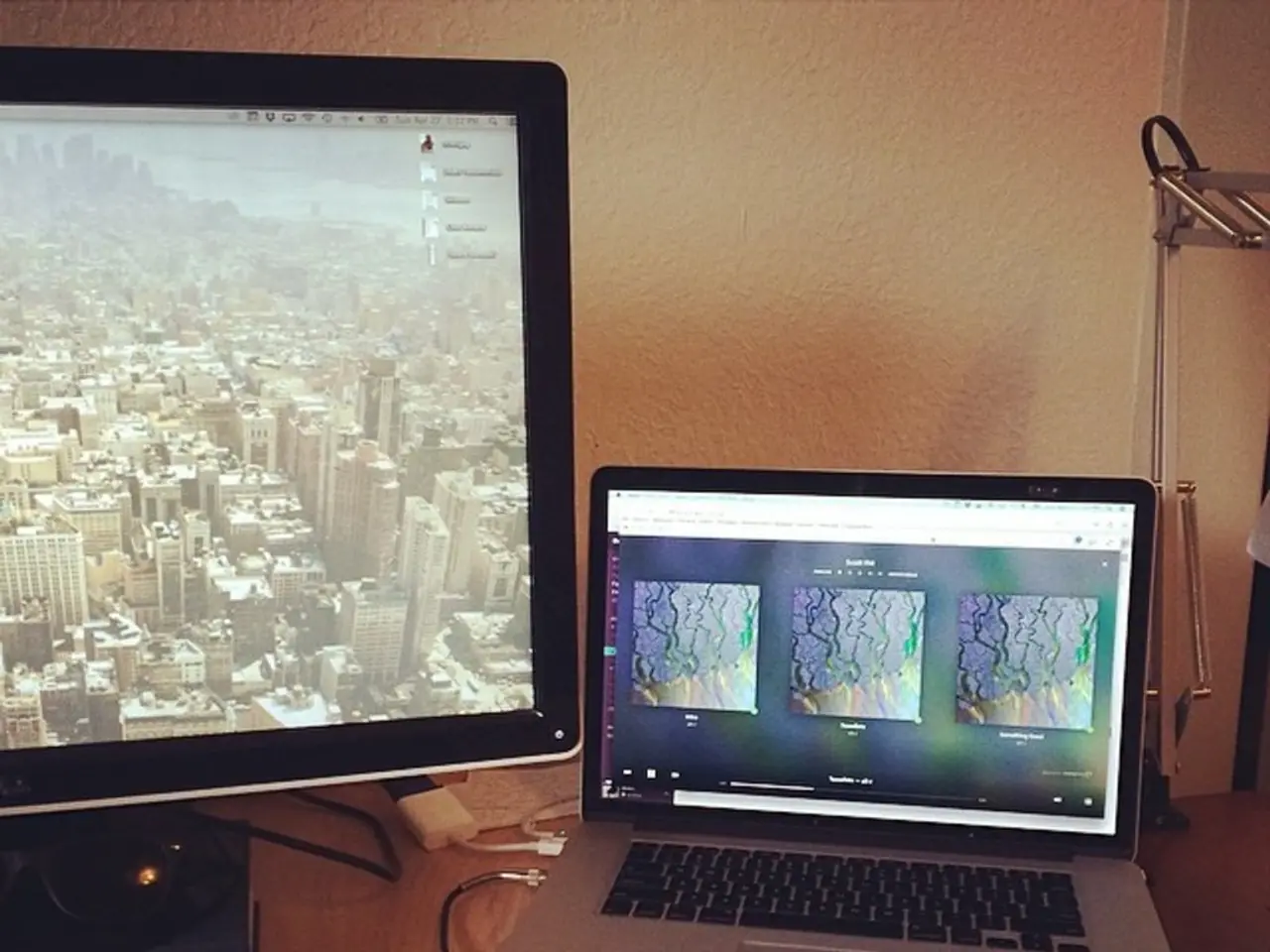Data Pathways in Digital Networking Systems
In the realm of computer technology, the physical medium through which data is transmitted within a network is known as Transmission Media. This article will delve into the two main categories of Transmission Media: Guided and Unguided, and explore various types of each.
Guided Media, also known as Wired or Bounded transmission media, confines signals in a narrow pathway using physical links. This category includes Twisted Pair Cable, Coaxial cable, Stripline, and Microstripline.
Twisted Pair Cable is the most widely used Transmission Media, consisting of 2 insulated conductor wires twisted about each other. UTP (Unshielded Twisted Pair) is used for telephonic applications, while STP (Shielded Twisted Pair) is employed in fast data rate Ethernet and in voice and data channels of telephone lines.
Coaxial cable is another widely used Guided Media, particularly in Cable TVs and analog television networks. Stripline uses a conducting material sandwiched between two layers of the ground plane, usually shorted to provide EMI immunity. A microstripline is a type of transmission media used to carry high-frequency signals, consisting of a flat, narrow conducting strip on top of a dielectric material with a metal ground plane on the other side.
On the other hand, Unguided Media, also known as Wireless or Unbounded transmission media, does not require a physical medium for the transmission of electromagnetic signals and is used for larger distances. This category includes Radio waves, Infrared waves, and Microwaves.
Radio waves are easy to generate, can penetrate through buildings, and the sending and receiving antennas need not be aligned. They are used in AM and FM radios, cordless phones, and various wireless devices. The frequency range for radio waves is 3 KHz to 1GHz.
Infrared waves are used for very short distance communication and cannot penetrate through obstacles. They are used in devices such as TV remotes, wireless mouse, keyboard, and printer. The frequency range for Infrared waves is 300GHz to 400THz.
Microwaves are a line of sight transmission, majorly used for mobile phone communication and television distribution. Frequency Range: 1GHz - 300GHz. Microwaves are also instrumental in communication (e.g., wireless data transfer), sensor technology, and signal processing, particularly in connection with the development of compact, energy-efficient devices that bridge between microwave and terahertz technologies for communication and sensing purposes.
When designing Transmission Media, factors such as Bandwidth, Transmission Impairment, and Interference are carefully considered. Common causes of Transmission Impairment include signal distortion, attenuation, and noise. Attenuation is the loss of signal strength as it travels over distance due to resistance of the medium. Distortion is the change in the shape of a signal, usually in composite signals with different frequencies. Noise is unwanted signals that mix with the original signal, potentially corrupting it.
In conclusion, the choice of Transmission Media depends on factors like distance, speed, and interference. Whether it's the wired Guided Media or the wireless Unguided Media, each has its unique properties and applications, contributing significantly to the seamless transmission of data within computer networks.
Read also:
- MRI Scans in Epilepsy Diagnosis: Function and Revealed Findings
- Hematology specialist and anemia treatment: The role of a hematologist in managing anemia conditions
- Enhancing the framework or setup for efficient operation and growth
- Hydroelectric Power Generation Industry Forecasted to Expand to USD 413.3 Billion by 2034, Projected Growth Rate of 5.8% Compound Annual Growth Rate (CAGR)








